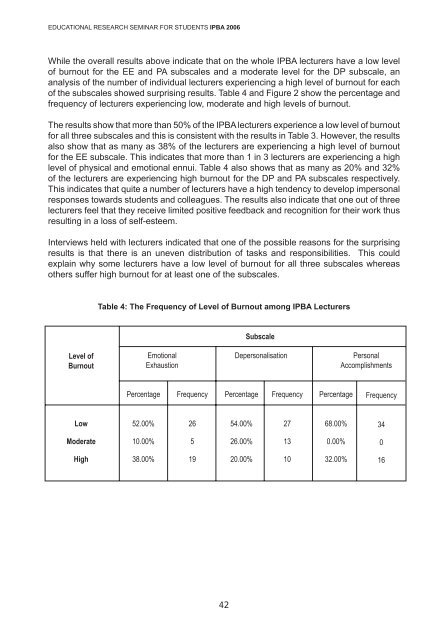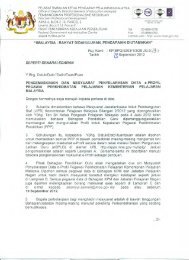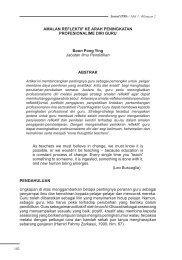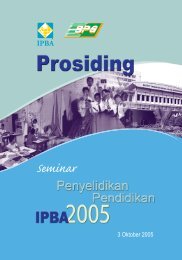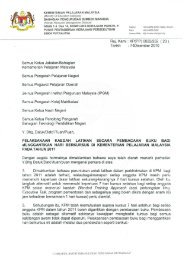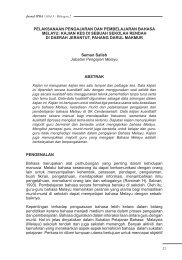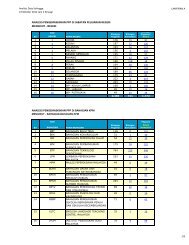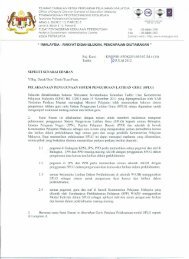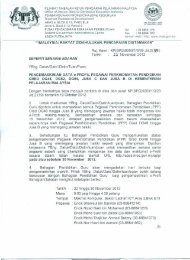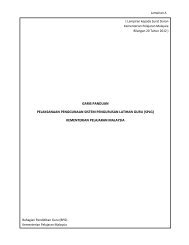The Level of Burnout among IPBA Lecturers
The Level of Burnout among IPBA Lecturers
The Level of Burnout among IPBA Lecturers
Create successful ePaper yourself
Turn your PDF publications into a flip-book with our unique Google optimized e-Paper software.
While the overall results above indicate that on the whole <strong>IPBA</strong> lecturers have a low level<br />
<strong>of</strong> burnout for the EE and PA subscales and a moderate level for the DP subscale, an<br />
analysis <strong>of</strong> the number <strong>of</strong> individual lecturers experiencing a high level <strong>of</strong> burnout for each<br />
<strong>of</strong> the subscales showed surprising results. Table 4 and Figure 2 show the percentage and<br />
frequency <strong>of</strong> lecturers experiencing low, moderate and high levels <strong>of</strong> burnout.<br />
<strong>The</strong> results show that more than 50% <strong>of</strong> the <strong>IPBA</strong> lecturers experience a low level <strong>of</strong> burnout<br />
for all three subscales and this is consistent with the results in Table 3. However, the results<br />
also show that as many as 38% <strong>of</strong> the lecturers are experiencing a high level <strong>of</strong> burnout<br />
for the EE subscale. This indicates that more than 1 in 3 lecturers are experiencing a high<br />
level <strong>of</strong> physical and emotional ennui. Table 4 also shows that as many as 20% and 32%<br />
<strong>of</strong> the lecturers are experiencing high burnout for the DP and PA subscales respectively.<br />
This indicates that quite a number <strong>of</strong> lecturers have a high tendency to develop impersonal<br />
responses towards students and colleagues. <strong>The</strong> results also indicate that one out <strong>of</strong> three<br />
lecturers feel that they receive limited positive feedback and recognition for their work thus<br />
resulting in a loss <strong>of</strong> self-esteem.<br />
Interviews held with lecturers indicated that one <strong>of</strong> the possible reasons for the surprising<br />
results is that there is an uneven distribution <strong>of</strong> tasks and responsibilities. This could<br />
explain why some lecturers have a low level <strong>of</strong> burnout for all three subscales whereas<br />
others suffer high burnout for at least one <strong>of</strong> the subscales.<br />
Table 4: <strong>The</strong> Frequency <strong>of</strong> <strong>Level</strong> <strong>of</strong> <strong>Burnout</strong> <strong>among</strong> <strong>IPBA</strong> <strong>Lecturers</strong><br />
Subscale<br />
<strong>Level</strong> <strong>of</strong><br />
<strong>Burnout</strong><br />
Emotional<br />
Exhaustion<br />
Depersonalisation<br />
Personal<br />
Accomplishments<br />
Percentage Frequency Percentage Frequency Percentage Frequency<br />
Low<br />
52.00% 26<br />
54.00% 27<br />
68.00% 34<br />
Moderate 10.00% 5 26.00% 13 0.00% 0<br />
High 38.00% 19 20.00% 10 32.00% 16<br />
42


